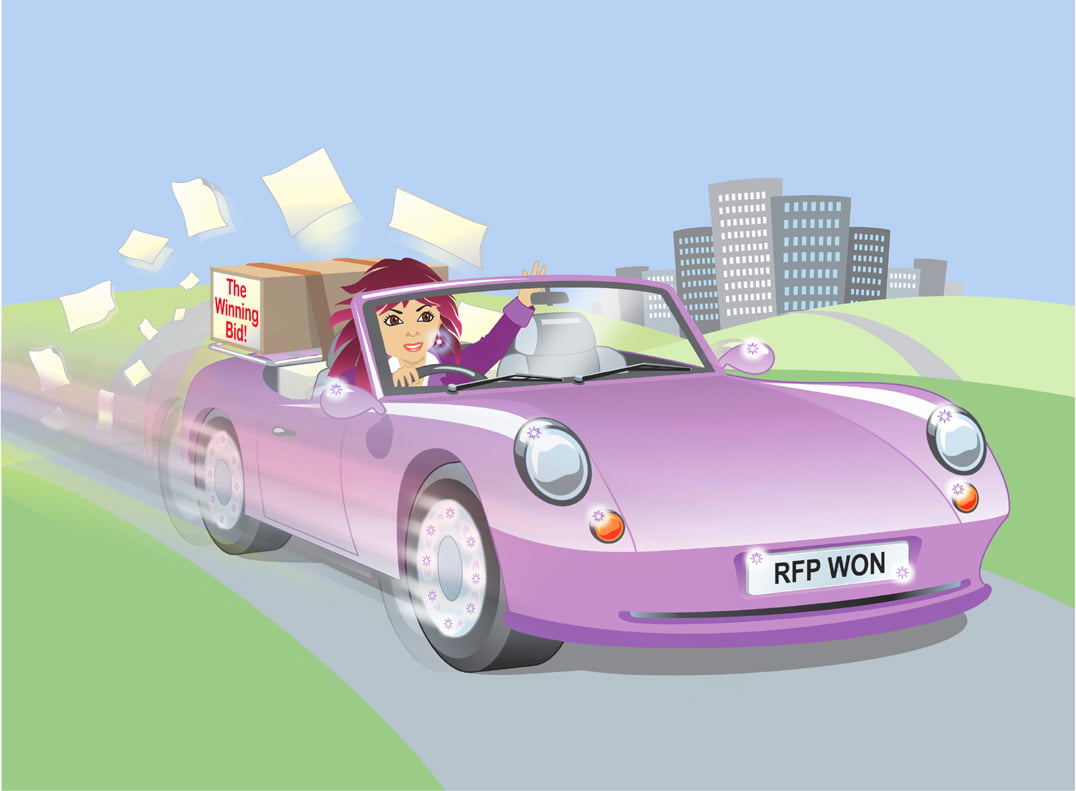what is bid writing
Want to write better bids? Read more newspapers…
By Sharon Pink
You want clients to say YES to your proposal…. That means making sure your bids are easy to read. It means grabbing the reader’s attention to start with and understanding how people like to read and take in information. And it means writing in a way that holds your reader’s interest. To see expert examples of this on a daily basis, simply read newspapers… Broadsheet, tabloid, lifestyle or business supplements (even the TV section): read, learn and admire how editors and compositors present information to hook you in and keep you engaged.
The more you read publications that are designed specifically to sell themselves to you, the more you will see how they do it – and you will improve your own bid writing with similar attraction and retention techniques.
Let’s examine how those newspapers do it. Look at the front page. Nothing is left to chance. All aspects of positioning and layout are designed with you, the reader, in mind. What catches your eye? Headlines! (Win themes). Sub-headings: more info to help you decide you want to read this (key messages). A photo here, a quote over there… An attractive page, strong headlines to draw you in and now you want to know more. Check your proposal cover – how does it compare?
Back to the newspaper. First rule of journalism: every article should give you the who/what/where/when/why in those first essential paragraphs, so that if those first parts are all that you read, you’ve got the drift (yay: it’s the Executive Summary). Then you might read on for more detail – or not (you are the decision-maker here). If you do read on, look at how the detail expands towards the end. Sub-editors cut from the bottom up, so all journalists learn to put the key facts and revelations near the top, while writing in enough background detail to fill a page if needed.
Knowing how you as a reader respond to the key summary info being near the top, giving you the gist of the story, do you provide that courtesy to your proposal evaluators and put summary paragraphs at the top of other sections such as the Solution Overview, capturing the key elements? If not, why not?
Open the newspaper out. Instinctively you look at the right-hand page first. We all do. It’s why journalists want their stories there and why columnists want their columns there. It’s why advertising costs more there! Stories on the left-hand page need to work harder to stand out. Do your proposals maximise the “right-hand page” focus?
Look at the positioning and emphasis of different types of article. For example, everyone knows sports stories go on the back page. If there’s a sports story on the front page, that means it’s BIG news. Similarly in your proposals, everyone knows the place for technical detail is in the solution sections. However, if you’ve got some seriously important or innovative ideas for that client, bring them forward to the Executive Summary with a headline explaining the value-add or differentiators they offer your client. That’s the BIG news.
Consider each newspaper page as a whole. What visual appeal does it have to you? See how they use little headings or keywords to highlight or start individual paragraphs, breaking up the text on longer stories. Look at features on the business, financial or legal pages. Note the tactics to balance detailed text and simplify complicated descriptions: charts, maps, infographics. Look at the “box-outs” that contrast the words, providing some statistics or a bit of background colour to the story. All these are designed to help keep your attention and interest – or direct you to somewhere else in the paper or their website for more information (building credibility).
Look at the end of longer articles. There might be text in a contrast font or colour, asking a question or inviting you to comment on that story (the call to action – further engagement with the reader/evaluator) or a link to other similar stories (reference sites/case studies).
So how well has that newspaper done to draw you in, inform you, interest you and deliver the news and information you want? Compare with other papers to see variations on the same theme! Now, come back to your proposal page – and write differently… Use the tactics above and you will really be writing for YOUR reader – to engage, interest, inform and persuade….
Lastly, never underestimate reader (customer) loyalty: any newsagent will tell you how rarely people change their choice of daily paper. So settle down with a newspaper right now – you’re working on improving your bids…


